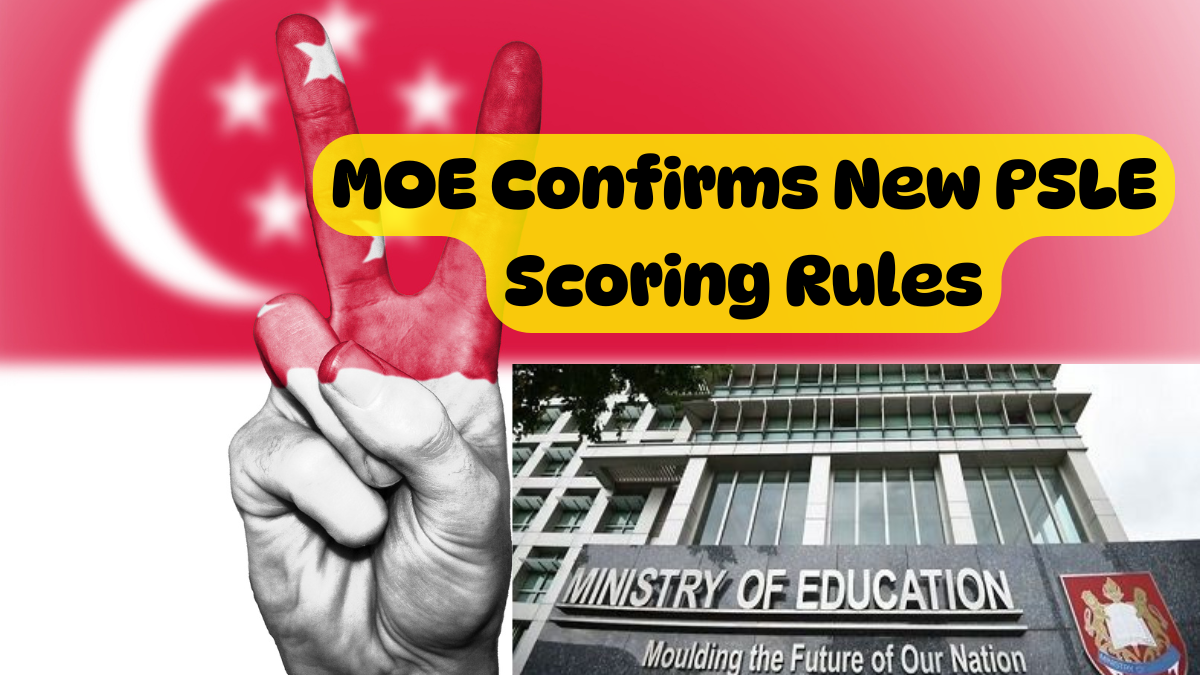The Ministry of Education (MOE) Singapore has officially confirmed updates to the PSLE (Primary School Leaving Examination) scoring system for 2025. This move is part of a broader effort to create a fairer, less stressful academic environment for young students while ensuring the integrity of academic achievements.
In this article, we’ll break down the MOE new PSLE scoring rules 2025, explain what parents and students need to know, and offer insights on how these changes may impact secondary school placement.

Summary of MOE New PSLE Scoring Rules 2025
| Key Update | Details |
|---|---|
| New Achievement Level (AL) Bands | AL 1 (best) to AL 8 (lowest) for each subject |
| No More T-score Aggregate | Replaced with Total Achievement Level Score (4 to 32) |
| Secondary School Placement Criteria | Based on Total AL Score, with tie-breakers if needed |
| Emphasis on Holistic Learning | Reduced focus on academic ranking, more on overall growth |
Why the Change? A Move Toward Reducing Stress
For years, the T-score system placed immense pressure on Primary 6 students, as every decimal point counted towards their final aggregate score. The Singapore MOE update aims to reduce excessive academic stress by grouping subject scores into Achievement Levels (AL) rather than ranking students against one another.
This shift promotes a healthier educational experience by recognizing individual learning journeys and encouraging students to pursue personal improvement rather than compete solely for top ranks.
How the New PSLE Scoring System Works
Under the MOE new PSLE scoring rules 2025, each subject will be graded using AL bands, ranging from AL1 to AL8:
-
AL1: 90 marks and above
-
AL2: 85 – 89
-
AL3: 80 – 84
-
AL4: 75 – 79
-
AL5: 65 – 74
-
AL6: 45 – 64
-
AL7: 20 – 44
-
AL8: Below 20
The total PSLE score will be the sum of the four subject AL scores, ranging from 4 (best) to 32 (lowest).
For example: If a student scores AL2 in English, AL3 in Maths, AL1 in Science, and AL4 in Mother Tongue, their total score would be 2 + 3 + 1 + 4 = 10.
What This Means for Secondary School Placement
Secondary schools will now admit students based on their total AL score instead of the old aggregate T-score. This new approach ensures students are placed fairly while maintaining healthy competition within reasonable boundaries.
In cases where two or more students have the same total AL score, tie-breakers will be applied in the following order:
-
Citizenship (Singapore Citizens get priority)
-
Choice order of schools listed by the student
-
Computerised balloting (if necessary)
This system balances meritocracy with fairness, reducing academic anxiety while preserving opportunities for high-achieving students.
Preparing for the PSLE Changes: Tips for Parents
The PSLE changes for students mean parents need to adjust how they support their children’s educational journey. Here’s how you can help:
-
Focus on Consistent Effort: Encourage steady academic progress rather than last-minute cramming.
-
Promote Holistic Learning: Involve your child in extracurricular activities and value non-academic achievements.
-
Understand the AL Bands: Knowing where your child stands helps set realistic, motivating goals.
-
Use School Preference Wisely: List schools strategically, keeping in mind your child’s abilities and interests.
What Educators Say About the New PSLE Scoring System
Many educators welcome the changes, seeing them as a progressive step toward cultivating well-rounded students. Schools are also adopting teaching strategies that move away from rote learning, focusing instead on conceptual understanding and practical application.
According to several Singapore school principals, this move encourages students to embrace learning for its own sake, not just for grades.
FAQ — MOE New PSLE Scoring Rules 2025
Q1: When will the new PSLE scoring system start?
It will officially apply to the 2025 Primary 6 cohort and beyond.
Q2: How will the AL scoring system reduce stress?
By grouping scores into bands rather than exact ranks, students can focus on achieving their personal best without obsessing over decimal points.
Q3: Will secondary schools still have cut-off points?
Yes, but instead of T-scores, they’ll use AL cut-off scores. These will be based on the school’s previous intake scores under the new system.
Q4: Can parents appeal school placements?
Yes, parents can still appeal based on specific criteria such as medical conditions, special talents, or proximity to home.
Q5: How will this affect students aiming for elite schools?
While top schools will remain competitive, the emphasis is shifting towards holistic development, giving more students access to a range of good school options.
Final Thoughts
The MOE new PSLE scoring rules 2025 represent a significant shift in Singapore’s education landscape. By easing the relentless focus on numerical ranking and promoting balanced growth, these changes aim to prepare students not just for exams but for life.
Parents, educators, and students alike should embrace this new system as an opportunity to focus on genuine learning, personal growth, and well-rounded development — essential values in an ever-evolving world.
Click here to know more.